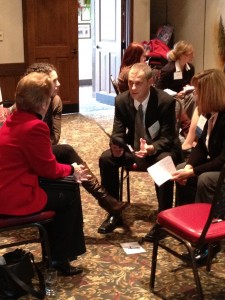How do you facilitate change?
How do you facilitate change? In this occasional series, we’ll explore various aspects of facilitating individual and group change.

Many people think that we can make change happen by presenting logical reasons why the change should be made.
Many people are wrong.
Here are John Kotter’s & Dan Cohen’s findings about implementing change, as described by Chip and Dan Heath in their book Switch.
SEE-FEEL-CHANGE
In The Heart of Change, John Kotter & Dan Cohen report on a study they conducted with the help of a team at Deloitte Consulting. The project team interviewed over 400 people across more than 130 companies in the United States, Europe, Australia, and South Africa, in the hopes of understanding why change happens in large organizations…
What did they find?
…the core of the matter is always about changing the behavior of people, and behavior change happens in highly successful situations mostly by speaking to people’s feelings.
…Kotter and Cohen observed that, in almost all successful change efforts, the sequence of change is not ANALYZE-THINK-CHANGE but SEE-FEEL-CHANGE.
This is why peer conferences are so effective at catalyzing change. The peer conference change model embraces the important role of feelings in facilitating change. Explicit ground rules that make it safe to express feelings (The Four Freedoms and group agreement on confidentiality) are key. Also important is the closing personal introspective. This provides a framework for participants to determine the changes they wish to make and uses group sharing, often emotional, to reinforce participants’ conclusions.
In fact, peer conference design implements a change model that is even broader than Kotter & Cohen’s SEE-FEEL-CHANGE.
EXPERIENCE-FEEL-CHANGE
Rather than concentrating on seeing, just one of our five human senses, peer conference design facilitates and supports the sequence EXPERIENCE-FEEL-CHANGE, where EXPERIENCE includes multiple sensing modalities. Small group discussions, storytelling, outdoor talk-while-walking sessions, mini-workshops, and simulations all stimulate multiple senses, providing fertile input for the emotional responses that are vital components for creating successful change.
We are driven much more by our emotions than most of us are willing to admit. Let’s recognize this, and use conference designs that, by capitalizing on this reality rather than denying it, are more effective.
How do you evoke emotions at your events? Have you found doing this to be an effective way of facilitating change?

